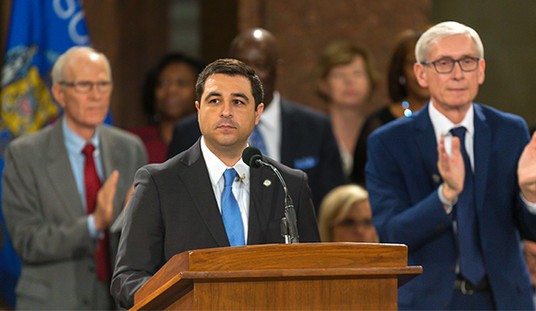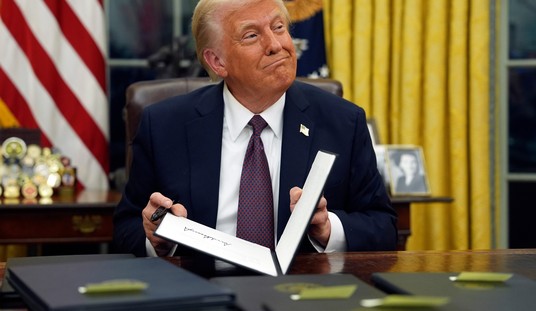The Islamic Republic of Iran is a state in peril – one whose decades-long revisionist foreign policy has had a boomerang effect – bringing the wars it fueled in the Middle East back to the homeland. In some ways it was only a matter of time that the oppressive radical Islamist regime, which offered nothing in the way of state building to its citizens, would find itself at this dead end.
It did not have to be like that. In sharp contrast, and to Iran’s north is Kazakhstan. The Central Asian country is a model of state building and constructive foreign policy decision-making - in large part due to the leadership of its founding president Nursultan Nazarbayev. Post-independence the founding president succeeded in his ambition to revitalize the Kazakh nation after centuries of Russian and Soviet occupation that resulted in communist oppression, agricultural devastation, environmental destruction and mismanagement.
Kazakhstan hosted the Second China-Central Asia summit on June 16-17 attended by Chinese president Xi Jinping and his counterparts from the other four Central Asian states. A few days later, on June 21, the foreign ministry in Astana issued a statement warning that U.S. military strikes on Iran could have “serious consequences” for security in the Caspian region. Then on June 23 spokesperson Aibek Smadiyarov strongly rejected Russian media reports suggesting that Ukrainian forces were launching drones from Kazakhstan’s territory. Most recently, Kazakhstan’s Minister of Defense June 25 held separate meetings with his counterparts from India and Pakistan on the sidelines of the Shanghai Cooperation Council, a mere six weeks after the two South Asian nuclear-armed neighbors fought an 87-hour war.
This flurry of diplomatic activity in just under two weeks underscores how Kazakhstan is dynamically navigating the various geopolitical crosswinds blowing across the Eurasian landmass from different directions. It underscores the multi-vector foreign policy approach, a doctrine conceived by Nazarbayev and the current President Kassym‑Jomart Tokayev when he served as Kazakhstan’s foreign minister. Tokayev is also an accomplished senior UN diplomat.
Recommended
It is remarkable that the Central Asian nation in a mere 33 years since independence grew to punch above its weight and thus has emerged as a middle power. The country has made great strides in terms of domestic political economic development and balancing a variety of external relations with former liege Russia involved in a brutal war in Ukraine, its eastern neighbor and geoeconomic powerhouse China, and the United States.
At a time when Washington is trying to defuse a potentially disastrous situation with Tehran over the latter’s efforts to acquire nuclear weapons, destabilize and dominate its neighbors, and align itself with Russia and China, it is important to recall the path that Kazakhstan embarked upon. Shortly after the Soviet implosion the newly sovereign Kazakhstan worked very closely with the United States to rid itself of the stockpile of 1,400 nuclear warheads it inherited from the USSR. At the time, Nazarbayev decided in favor of voluntary denuclearization to gain international legitimacy, economic aid, and security assurances.
During the Clinton Administration, Washington provided extensive support to Astana through the Nunn–Lugar Act, which included: deactivation and removal of nuclear warheads, dismantling of missiles, silos, and bombers, securing radioactive materials and weapons-grade uranium, and environmental cleanup of the testing site at Semipalatinsk shuttered by Nazarbayev even before the Soviet collapse. Kazakhstan’s handling of highly enriched uranium (HEU) may be a model for Iran today. In 1995–96 through Project Sapphire the U.S. airlifted 600 kg of from a Kazakh facility back to the United States.This lengthy and complicated process of nuclear disarmament allowed Kazakhstan to focus on political and economic development.
This was crucial because it entailed a difficult transition from a command style to a market economy. At the broader political level, it was a transformation of what was essentially a Soviet Socialist Republic into a modern secular nation-state for the Kazakh people that had emerged from nearly 250 years of Russian colonial rule. Being the chief executive of the Kazakh SSR since the mid 1980s Nazarbayev at one point realized that Soviet leader Mikhail Gorbachev’s policies of perestroika and glasnost would not succeed in saving the Union and prepared for breaking from its orbit towards independence.
As part of the Soviet Union, the Kazakh SSR was in decay, which meant that modernization became a post-independence imperative.The largest sovereign entity by area to emerge from the debris of the USSR had to focus on legal rights, a new educational system, and attracting foreign investment for the new state. These early moves laid the foundations that would enable Kazakhstan to emerge as the largest economy of Central Asia. It allowed the new state to in a very short amount of time project geopolitical influence beyond its immediate strategic environs.
The nationalists among the Iranian political elite who seek to do away with the radicalism of the current regime would be well advised to learn from the early experiences of Kazakhstan, a fellow energy rich state. They can follow the lead of Nazarbayev and his decision to denuclearize while moving away from a regime that was dying. Today, this elder statesman(who celebrates his 85th birthday on July 6) could provide valuable advice on how to deal with the Iranian nuclear program. The Trump Administration should consider the model of Kazakhstan in its efforts to craft an Iran policy for peace and prosperity.
Kamran Bokhari, PhD is a Senior Director at the New Lines Institute for Strategy & Policy in Washington. Bokhari teaches Eurasian Geopolitics and Central Asia in the Security Studies Program at Georgetown University.
























Join the conversation as a VIP Member